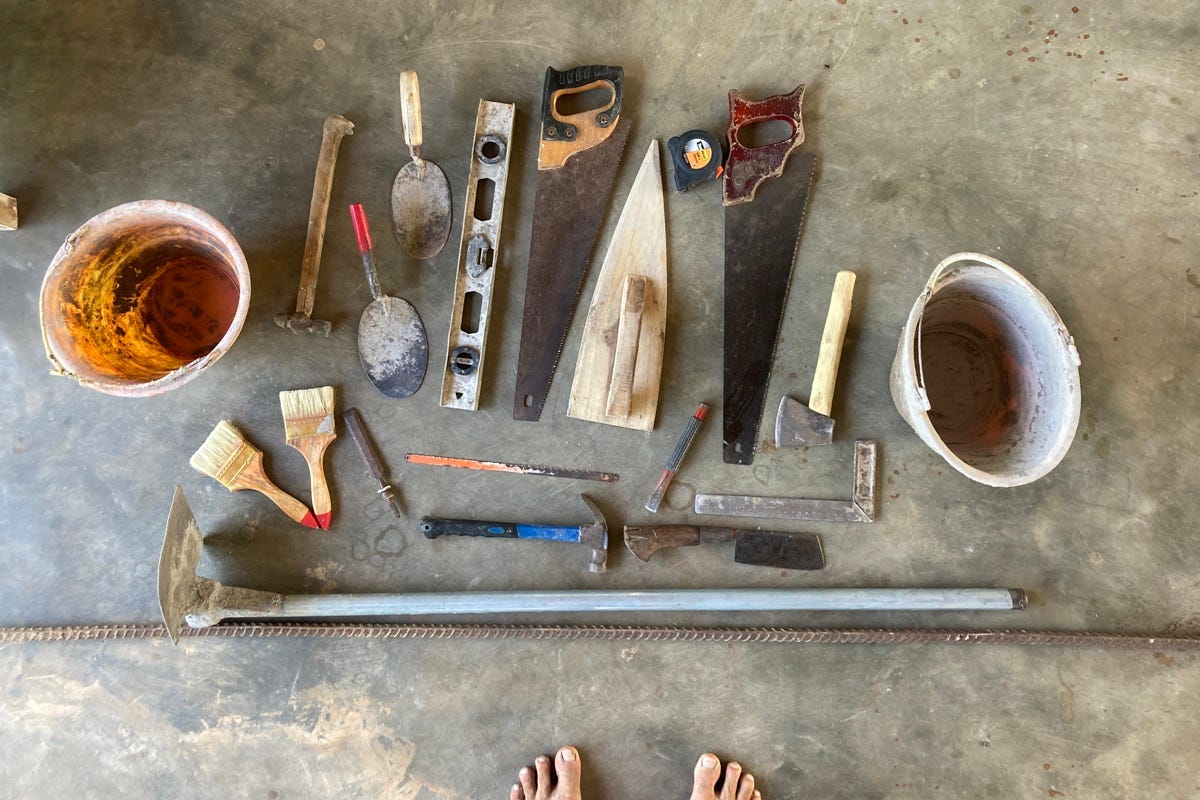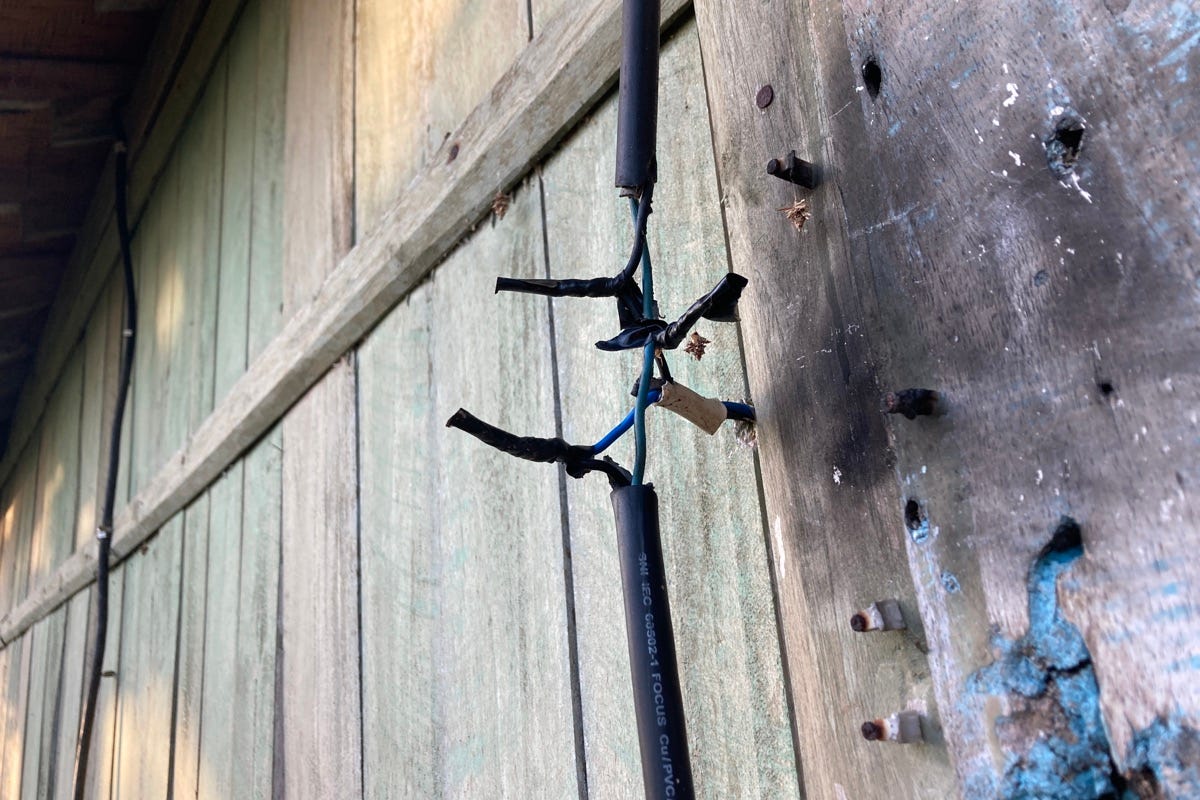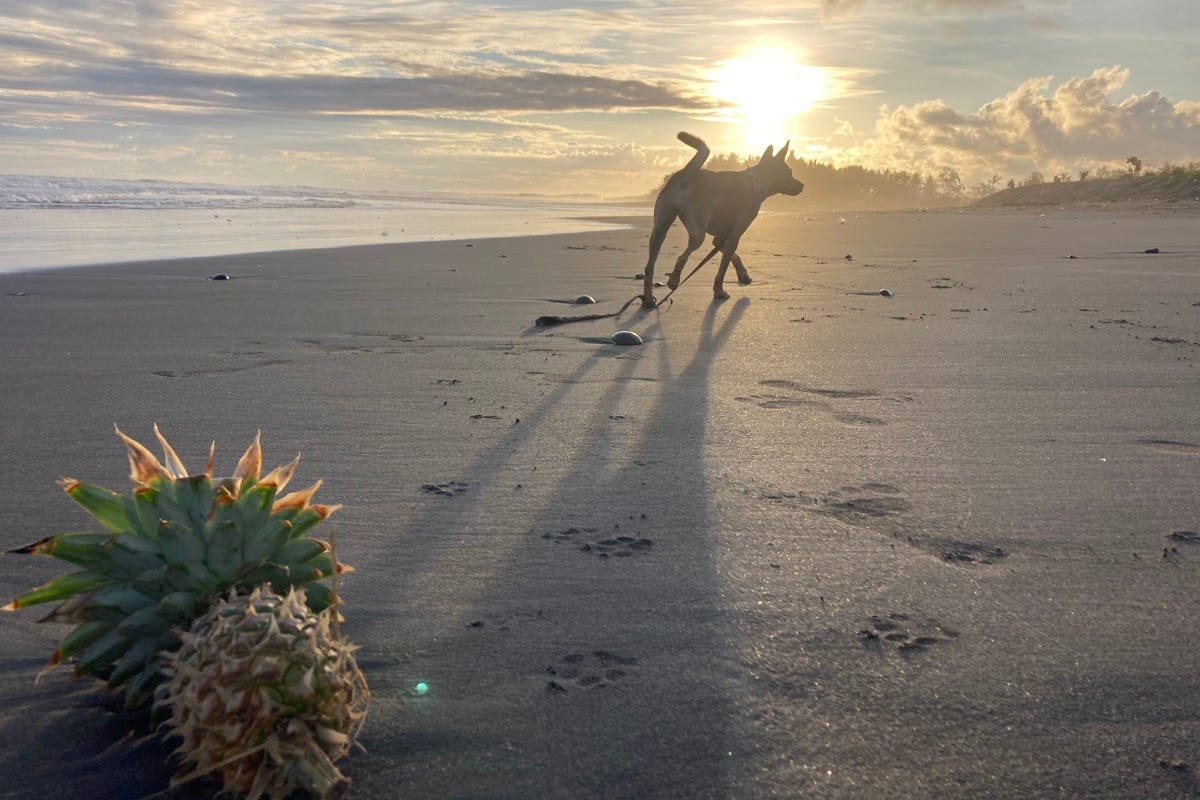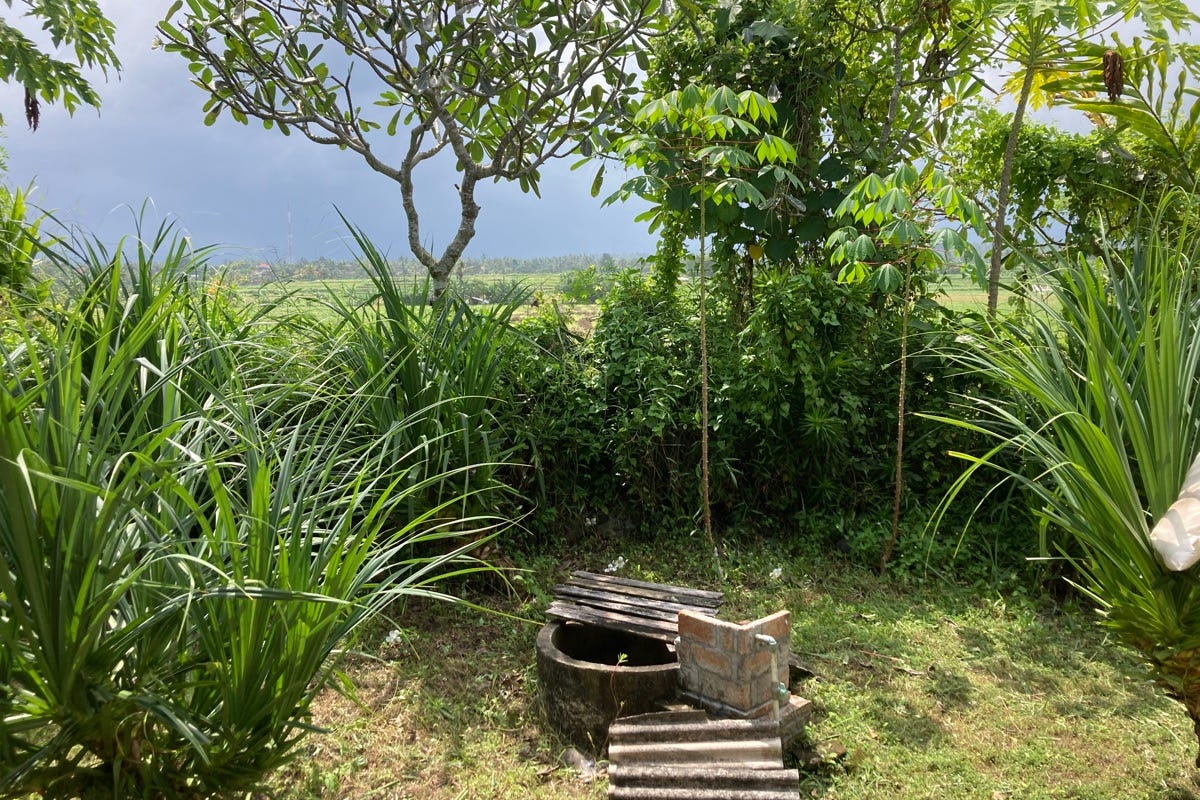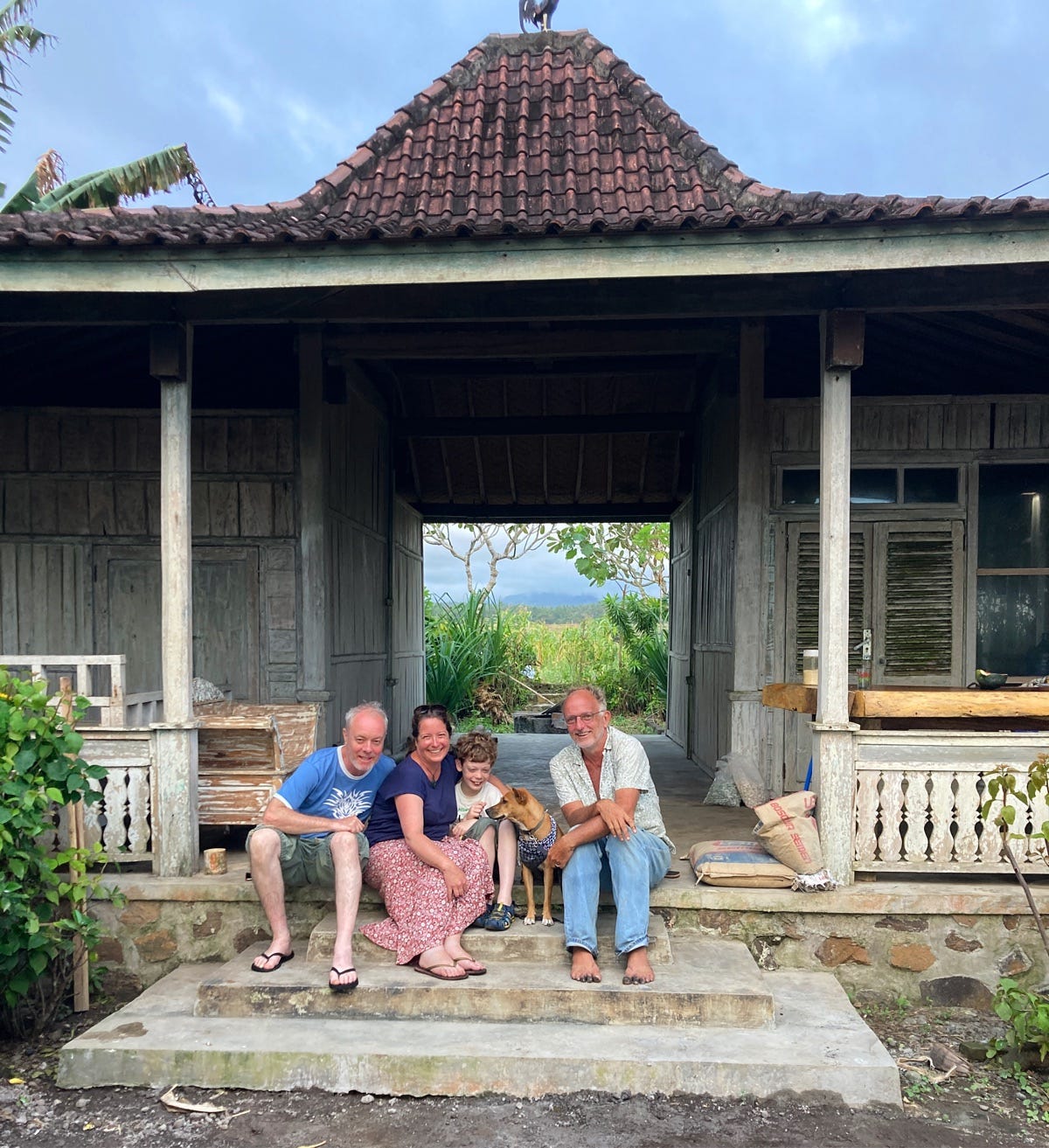A quick word of introduction. My name is Stuart McDonald and this is Couchfish—the perfect tub of ice-cream for the traveller stranded on the couch. The newsletter has both a paid edition which traces a fantasy itinerary through Southeast Asia, and a free one that covers, well, everything else. If you’d like to support me finding more tourism stuff to moan about, please consider becoming a paid subscriber. Thank you.
My piece on finding a beach house thanks to my dog wasn’t so much a humble brag, and today’s post explains why. Much as I wrote, our little garden was a (very messy) canvas for the landscaper, and the beach house would be a canvas of my own. One not so much to try my hand at art—think yourself lucky—but rather a sustainability one. I’ve been writing for years on sustainable tourism, and here was an opportunity to put my words into action. Grand plans and all that.
In case you’re new to the couch, sustainable tourism (in theory) rests on three foundations—the environment, the economy, and the social. While I have no intentions in turning the beach shack into a rental, how can I de-shackify it with these principles in mind? As it turns out, few things come easy.
Inventiveness through necessity. The builders’ entire tool set. Photo: Stuart McDonald.
As with the foundations of a real house, sustainable tourism’s three bases intertwine and rely upon one another. Viewed in a holistic manner, it’s all well and good to source local labour, but if they’re building eleventy million private pool villas in a water-stressed locale, the end result is not ideal.
In my case, there is much to do. The house has a bathroom my kids won’t touch with a bargepole, the “garden” is like a set out of Apocalypse Now, and the electrics, well, as an Australian electrician once said of our flat in Bangkok, “it’s a death trap.”
I’m a travel writer—not an architect. Photo: Stuart McDonald.
With Agung’s help—and at my instruction—we source a local building team. From two villages very close at hand, these guys know how to mix concrete, and at that they excel. While I need that talent, I also want a staggered and curving bamboo wall for a far larger bathroom. One of the team has worked with bamboo before, though never a curving, multi-section wall. He reckons it won’t be too much more complicated and I agree. We are both wrong.
While Agung “searches in the jungle for bamboo he likes,” the team busy themselves on the wall base and piping. I want to move the toilet and have two showers, one at either end. At the prompt of another, I asked after P-traps. P whats you ask? Yeah, same—it is to be one of many terms I learn that I wish I never needed to. After I sketch one out (thanks Google) the builders confess to having no idea, nor any idea where to buy them. Not for the last time, they improvise, building them out of pipe joins to make the same. Over and over their inventiveness impresses—as does their willingness to do things over as needed. In general, three times is a charm.
Is this the second or third try? I forget. Photo: Stuart McDonald.
In the end though, we get there. It takes twice as long, and my costs blow out a little—thanks in part to someone helping themselves to some bamboo—but the end product is great. The tub, one day to be used far in the future when I have hot water, is Bali-made.
The tub is a nice pivot point to water. As with much of Bali, there’s no mains, and instead out back I have a ten-metre deep well. Back in the day they’d hoisted it by bucket, but now a pump gives a much appreciated assist. It isn’t drinking water though, which leaves me needing to buy aqua gallons. Sure they’re refillable and all, but treated water would be great. We have a filtration system at our house in the south, but that cost close to what the shack is costing me per year, so I stick with the refills.
The kids’ names, ok, but cats and the dog? Crazy bule. Photo: Stuart McDonald.
What about hot water? Youtube tells me to lay black hose all over the back off the roof, use the pump to fill it, and let the sun heat it through the day. A cheap man’s solar I guess. This seems simple and something even I could manage, only then another alerts me to the risks of Legionnaires’ disease through such an approach. The risks are, it seems, low, but given how accident-prone I tend to be, I figure this is tempting fate. I stick with cold water—perhaps one day I’ll invest in solar to warm it up.
Solar brings me to power, and researching this, I talk to a solar set-up in South Bali. They ask what fittings I have, and I say one pump, nine lightbulbs, and some plugs for my laptop. They reply saying they need the information for the whole house—not one room. When I say this is the whole house, they suggest a car battery, explaining solar will take longer than my lease to pay itself off. End result, a future discussion with Agung to extend the lease by twenty years or so. I do however, rewire the entire house—the sparky conveniently lives just up the road—and yes, I have him on speed dial.
Looks solid. Photo: Stuart McDonald.
On the social side of things, there are two strands—work and food. Aside from the builders, who could I invest in my shack? The farmer who keeps an eye on the place now continues to do so, but is paid for his efforts. I even get him to stop setting my compost on fire. Another guy from a neighbouring village drops by every Friday to take to the garden with a machete—he heads to prayers afterwards, no doubt asking for forgiveness. The farmer’s wife both washes the sheets when I’m away and comes to make the offerings at the shack temple. These are all little things, and, save the offerings, things I could do myself, but this seems the least I can do.
Food wise, as I mentioned the other day, the shack kitchen is good for nothing but boiling water for coffee. Near all my meals come from a local babi guling warung or a line of nasi warungs up at the temple. The food is, I think without exception, all sourced locally.
About as pan-Asian as my meals get. Photo: Stuart McDonald.
There’s also a side story to the warungs. One morning I’m at one, and another customer asks me where I’m staying. Before I can answer, the owner replies on my behalf, telling her “He’s Australian, but he lives in Kerobokan. He comes up here a lot, but his wife and kids don’t come much.”
This is the thing—I keep to myself. Some days I chat to the fishermen on early morning walks, farmers drop by to sit on my porch, drink my coffee, and correct my Indonesian. I don’t go to the frequent cremations, though I do make a donation whenever the temple asks. Somehow all this filters up to a warung owner a kilometre away by the temple.
No photos of the magic helicopter, so here’s a magic pineapple. Photo: Stuart McDonald.
One morning chatting, a farmer tells me the house is haunted. “Babies in the well,” they say, “bad teenagers,” says another during a different session. This is, unsettling, and I do dream unweildy dreams while there. I’d put them down to the sea breeze and the sound of the surf, but perhaps there is something more at play. There’s a huge fragipani in the back corner overhanging the temple, and every month local villagers visit to make offerings at its base. I think this is for the babies or the teens, but instead it’s for good luck in some local numbers competition.
Very pre-dawn one morning I watch a helicopter offshore in darkness. Hovering, lights ablaze, I wonder if there is a search and rescue underway, as the fishers’ boats sink with disturbing regularity. But then it simply flies off. When I later ask Agung about it, he nods pensively, saying it is the “magic helicopter.” I’m still not quite sure what to make of that.
The cover is there for a reason. Photo: Stuart McDonald.
I don’t know quite what ghost stories have to do with sustainable tourism’s social pillar, but these conversations, at least for me, are useful. They help me understand—or not—in the smallest of ways, the cycle of life the local people follow. It is a very different cycle to mine, and they’re just as curious about mine—though nothing is off limits when they’re asking me stuff!
Grievances and inter-religious resentments surface fast, as does a sometimes sense of helplessness. Farmers keep cows in simple shelters on a few spots on the beach out front, and during the foot and mouth outbreak this is a big problem. Cows are sick, and some die, and as they tell me about it, as with rice cultivation, the brutal economics behind beef surface. The government is of some help, but as indicated by the collapsed retaining wall down the beach, not always in the most appropriate manner.
Seasonal squatter. Photo: Stuart McDonald.
For the first year, a local twenty-something guy drops by most days to chat. Smart and a tourism worker in the South but now mostly jobless thanks to the pandemic, he tells me about the trade. Miserly pay rates, exploitation, long commutes, then much of the wage lost paying for accommodation and food. He left some time ago, like many offshored young Balinese as an employee in the cruise industry. I remember talking to him not long before he left, his eyes bright with the expectation of seeing the world. He queries better-travelled me endlessly on what to see where. The debrief upon his return will be interesting to say the least.
So shaking it out, I managed to hire locally and use mostly local goods. The math on power and water changes, at least for the moment, don’t add up. I eat locally and contribute where I can to local undertakings. Still it’s a superficial affair, and yet, there is a far higher impact approach I could have taken—if I’d had the money. I could have knocked down the joglo, built an inward-looking expat ice cream cake with a big wall, a pool hidden behind, and an Ubud-sourced chef and attached staff.
The first of many visitors, though I didn’t mention the ghost helicopter. Photo: Putu.
I don’t want any of these things though, and truth be told, while I haven’t specifically asked them, I get the feeling the local people don’t either. To them, I think I’m a bit of a curiosity, the bule who listens to Led Zeppelin, who sweeps the leaves in a sarong every morning, and who pointlessly moves piles of dirt around.
Most importantly though, we all know I’m a guest.
Couchfish is 100 per cent independent and reader-supported. If you’re not already a subscriber, and you’d like to show your support, become a paying subscriber today for just US$7 per month—you can find out more about Couchfish here—or simply share this story with a friend.
Don’t forget, you can find the free podcasts on Apple, Pocket Casts and Spotify as well as right here on Couchfish.


